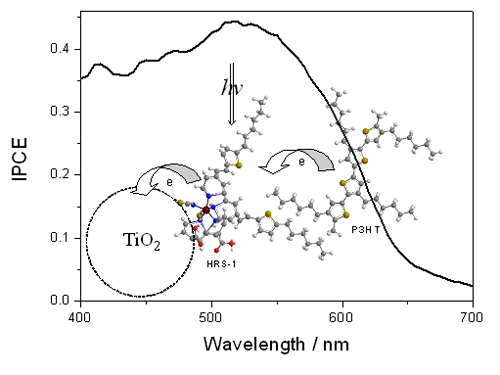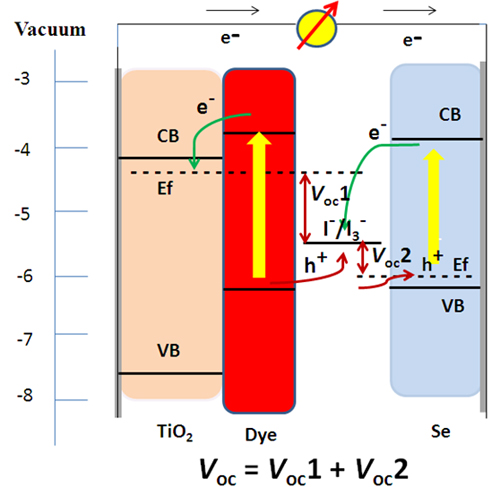CAS makes new progress in dye-sensitized solar cell research
Dye-sensitized solar cells have attracted wide attention due to their wide range of materials, low cost, and high photoelectric conversion efficiency. With the support of the National Natural Science Foundation of China, the Ministry of Science and Technology, and the Chinese Academy of Sciences, researchers from the New Materials Laboratory of the Institute of Chemistry have made a series of progresses in dye-sensitized solar cell research.
Dyes are key components in dye-sensitized solar cells. New material laboratory researchers through the material structure design and synthesis, in the bipyridinium dyes (Inorg. Chimica. Acta., 2008, 361, 783-785; Chem. Commun., 2006, 2460-2462), organic dyes (Chem Asian J., 2010, 5, 1911-1917; Dyes and Pigments, 2010, 87, 249-256; Chem. Commun., 2009, 2201-2203) and inorganic quantum dots (Chem. Commun., 2011, 47, 6461-6463) Some important progress has been made in research. In order to solve the effects of electrolyte corrosion and liquid leakage on the long-term stability of the battery, they conducted research on solid-state dye-sensitized solar cells based on poly-3-hexylthiophene hole-transport materials. The results of the study were published in Adv. Funct. Mater., 2009, 19, 2481-2485 and Chem. Commun., 2011, 47, 6461-6463, and were invited by Professor M. Grätzel, inventor of the dye sensitized cell, to participate in <
In order to improve the full use of the solar spectrum by dye-sensitized solar cells and efficiently capture photons of different wavelengths in the solar spectrum, they proposed the concept of a tandem cell consisting of a dye-sensitized photoanode and an inorganic semiconductor selenium photocathode to realize the single cell The series connection overcomes the complicated process and efficiency reduction that are usually caused by the simple series superposition of the battery, and the open circuit voltage of the prepared single battery reaches 940 mV. The above studies provide new ideas for further improving the photoelectric conversion efficiency of dye-sensitized solar cells. The research results were published in the recently published German “Applied Chemistry†(Angew. Chem. Int. Ed., 2012, 51, 10351-10354). ).

Figure 1 Solid-state dye-sensitized solar cell based on poly-3-hexylthiophene hole-transport material

Figure 2 Double reactive dye sensitized photoanode and semiconductor selenium photocathode tandem cell
Buffer ring is a common Machine element, which is used to reduce the vibration and noise generated during the operation of the machine. Buffer rings are mainly divided into two types: rubber buffer rings and spring buffer rings. Rubber buffer rings are suitable for low-frequency vibration and impact, while spring buffer rings are suitable for high-frequency vibration and impact. Buffer ring is an important Machine element, which is widely used in automobile, machinery, electronics and other fields.
Buffer Seals,Rod Buffer Seal,Seal Buffer,Buffer Seal Hydraulic
DG Zhongxingshun Sealing Products Factory , https://www.zxs-seal.com